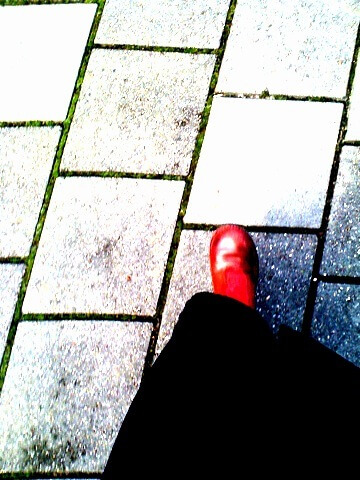The light just will not go away. An obstinate band of white above the mountain Hleiðólfsfjall keeps the night at a distance. Forty kilometres away, it casts a pale glimmer over Langanes, a peninsula shaped like a duck eagerly looking out over the sea. As if the creature, like me, wants to escape the light.
Þórshöfn, the duck’s backside
On the other side of the bedroom, the photographer is asleep. A mummy wrapped up in a duvet. A lock of black hair is the only thing that shows it’s her. If I had to disclose my location, I would say that I’m lying in the duck’s backside, about 14 kilometres from Þórshöfn. With its population of more than 400 souls, that easily makes it a sizeable town in these parts.

Why I’m lying in the duck’s backside is not so straightforward. At any rate, it’s not because of the weather. Rain clatters in bursts onto the aluminium roof of Ytra Lón. “Outside lake”, Mirjam had said when I asked what the name of the farm means. I have no idea what an outside lake is, not even in my own language. Eider ducks don’t care about language. They just bob about on an outside lake. Rat-a-tat, rapid-fire rain.
Ytra Lón
I climb out of bed, grab a sweater and walking boots from the floor and walk out of the accommodation. In the corridor I’m in Central America on a summer’s day. Mirjam has painted the guest rooms in bright colours – ours is fluorescent pink. The tropical plants are reaching upwards defiantly, as if they are sticking their tongues out at the modest grey and green of Iceland.
Outside, the countryside is cold and damp. Outside, the grass is too soaking wet to make hay. I take a look at the mountain behind the farm. This afternoon the hands of Sauron were hanging above Hleiðólfsfjall – dark grey clouds grasping the mountain ridge. It was Sverrir who had said Sauron and pointed to the clouds. “Icelanders have so many names for snow and clouds”, Mirjam had said.
North-east of Iceland
Mirjam. We’re here because of her. She grew up surrounded by the waters of Friesland, but settled in the north-east of Iceland about 30 years ago. Among deserted farms, boarded-up village shops and swaddled hay bales, left behind like marbles in a sandpit. Only the sheep and birds are in large numbers here.
“Why?”, I want to know. For me, Iceland is too empty, there is too much grass and not enough trees. For Mirjam, the Netherlands is too full, too hectic. The only thing we agree on is the lack of trees. They have planted shrubs around the farm to provide protection from the wind. In her colourful kitchen, she had pondered the question.
Film Heartstone
Perhaps, she had said hesitantly, while she stared out of the window at the buffeted shrubs, it had to do with her childhood. Anyone growing up on a cargo ship in Friesland is marked by a boundless feeling for freedom and space. According to filmmaker Guðmundur Arnar Guðmundsson, there’s nothing quite like a childhood in Iceland, away from the city.
In his film Heartstone which won numerous awards, two boys examine their feelings for girls and each other. The director grew up in Þórshöfn, not far from Ytra Lón. “Where the world is still your playground. You steal horses, go fishing, run after sheep and nobody stands in your way. You can still be crazy”, he said in an interview with Icelandair.
Réttir
Iceland is the America of the pioneers, but without the wild animals or deadly enemies. Well, apart from the weather and the light, that is. Or their absence. “Just wait until the winter kicks in, when ice covers the country and the tunnels are closed and the hospitals can’t be reached,” Mirjam had warned when I complained about the light. Personally, she finds the darker half of the year increasingly troublesome.
But not in the past. When winter began after réttir, the slaughter in October, the women huddled together. It was the season of carrying out repairs, tanning hides, painting the guest rooms, and the endless succession of cakes. It was the time for togetherness and creativity. Women’s groups are still flourishing in Iceland.
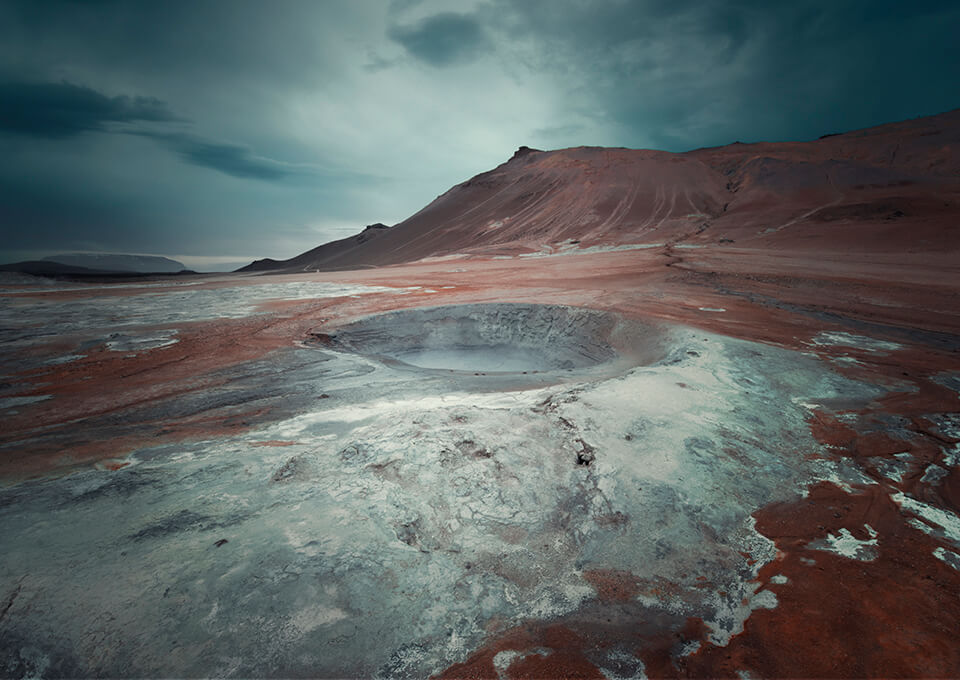
Arctic Circle
As a student she had travelled to Lapland once. It was only then that she had realised that Friesland isn’t in the north at all. That it’s all a matter of perception. That you can go much further, right up to the Arctic Circle. It had released something in her: an insatiable hunger for the North, the silence, the freedom and tranquillity.
For Mirjam it became Iceland. But that could be attributed to coincidence; in the 1980s it was easy to find work there. And, if you wanted, a husband. Sverrir’s farm, where she had applied for a summer job, became Sverrir and Mirjam’s farm after a while.
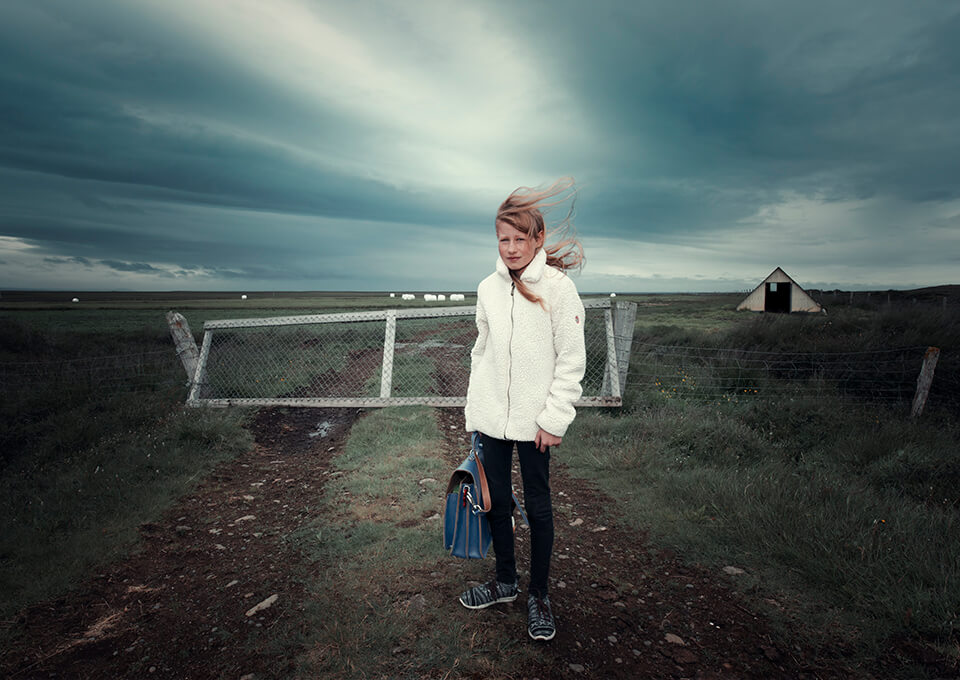
Fear of erosion
They would have stayed there, if fear of erosion hadn’t driven them away. The government’s fear, that is, not theirs. The sheep were ruining the land. The empty land that was almost uninhabited. So they had to go.
It became a farm on Langanes. You can’t get much further north than that, unless you want to live in Raufarhöfn, the most northerly town in Iceland. Once an important export harbour for herring, until fish quotas were disconnected from the location. Large companies bought up the quotas, the fish ran out, the fish processing plant disappeared and with it, the people and the facilities.
Kingdom of Sverrir
On a piece of land on the coast measuring 10 by 3 kilometres, including an outside lake with eider ducks, they built their new kingdom. With 500 sheep, 20 horses and a handful of border collies as subjects. Not forgetting four heirs to the throne.
“I am the king here”, Sverrir had joked that morning in the dining room where Mirjam set out breakfast for the guests. Icelandic yoghurt with rhubarb and French toast with cream. He ate at his leisure. The day was long, so why hurry?
Gannets and puffins
Life in his kingdom does present a challenge from time to time. Because in this region they cannot benefit from the power of the geysers, the installation of electricity is hideously expensive. Until last year, they hardly had Wi-Fi and other facilities are disappearing. And yet: “It’s just as beautiful here as in the south of Iceland where hordes of tourists follow the same route, but they don’t tell people that in Reykjavik. They would rather keep the money there.”
Sverrir believes in a conspiracy against the north-east – the region filled with mountains, rivers teeming with fish and rocks populated by countless gannets and puffins. “Reykjavik has forgotten us”, Sverrir had said. “They don’t care whether or not we exist. And if they suddenly remember us, it’s only because they are imposing some ridiculous regulation or other.” He had mentioned the fishermen.
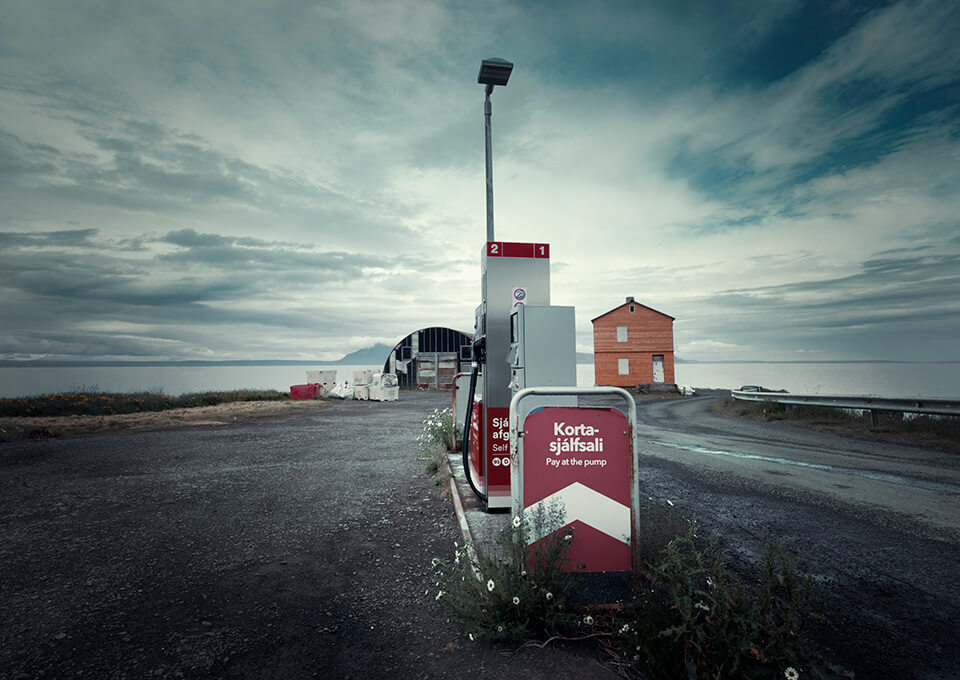
Reykjavik
The fishermen tried to stay afloat by taking tourists out to sea. The boats, and they themselves, would have been lying idle otherwise. But Reykjavik had decreed that fishing boats were not suitable for tourists and so the fishermen would have needed to buy another boat. In the capital, they had omitted to mention where the money would come from. “In the past we were poor, but we did all sorts of things. Now the country is rich and we have nothing.”
Sverrir had shrugged and looked outside. This son of a plumber from Reykjavik wanted the rain to stop. As a boy of 10 he had been lent out for five long months to farmers who could use a helping hand, the fate of many Icelandic children. “The farmer got his help, it was one less mouth to feed at home and the fresh air was good for you”, was the idea.
Different times
“Different times.” He cannot imagine sending his 10-year-old to a farm on the other side of the country, but that’s just how things went, for summers in a row. Until he was finally bitten by the farming bug.
The sun was peeping through the clouds. He got up, time to train the dogs. At the bottom of the road, his border collies had herded six sheep together. The black ones on the outside, the white ones inside. Did the dogs select on colour? Or did the sheep do it themselves?
In the middle of the training, he had run off again. “Stay here!”, the photographer had called out.
But Sverrir didn’t come back. The photographer had stamped her foot. “How can I make a reportage like this?”
Iceland’s cold blood
I walk down the road. On the right are the horses, and further along the smokehouse, where the trout caught in the outside lake behind the house are smoked. The water is army-jacket green. The dogs look at me expectantly. Above me, the light has got sucked onto the mountain. The sea is everywhere, but I can’t hear it; the sound is drowned out by the rain.
“Iceland’s cold blood” is what artist Roni Horn calls Icelandic weather. “There is very little that is threatening on Iceland”, she writes in one of her notes. “But there is the weather. Immoral and boisterous, murderous if you don’t pay enough attention to it, if you don’t respect its scale.”
Movie Carcasse
But apparently Horn never walked along the road from Ytra Lón towards the sea. Here yet another danger lies in wait. Technically this is Sverrir’s kingdom, but the little Arctic terns have a different idea. Anyone who has the nerve to be here is constantly attacked by the little black-and-white birds skimming close above you and pecking at your head. “Go away and stay away” is their message.
These words could have been spoken by neighbour Ágúst who lives next to the Þórshöfn airfield. In 1974 a small aircraft belly-flopped onto his land. The plane is still lying in his meadow by the sea. More than 40 years later, an Icelandic filmmaker used the aircraft in the film Carcasse, and Sverrir played the lead role, somewhat unexpectedly.
Bane of his life
“No idea what it was about, it was pretty experimental”, Sverrir had grunted. At first, he was the handyman, but when the actor took off one day, he was promoted to lead. It resulted in a trip to the film festival in Rotterdam for him and Mirjam.
“Go and have a look”, Mirjam had said. “The farmer won’t mind”. But the farmer did mind. He stopped mowing and asked angrily, “What are you doing?” He had let out a sigh. That plane was the bane of his life. Hordes of tourists walked right across his land, destroyed the birds’ nests, left gates open so that his horses escaped and were always knocking on his door for coffee.
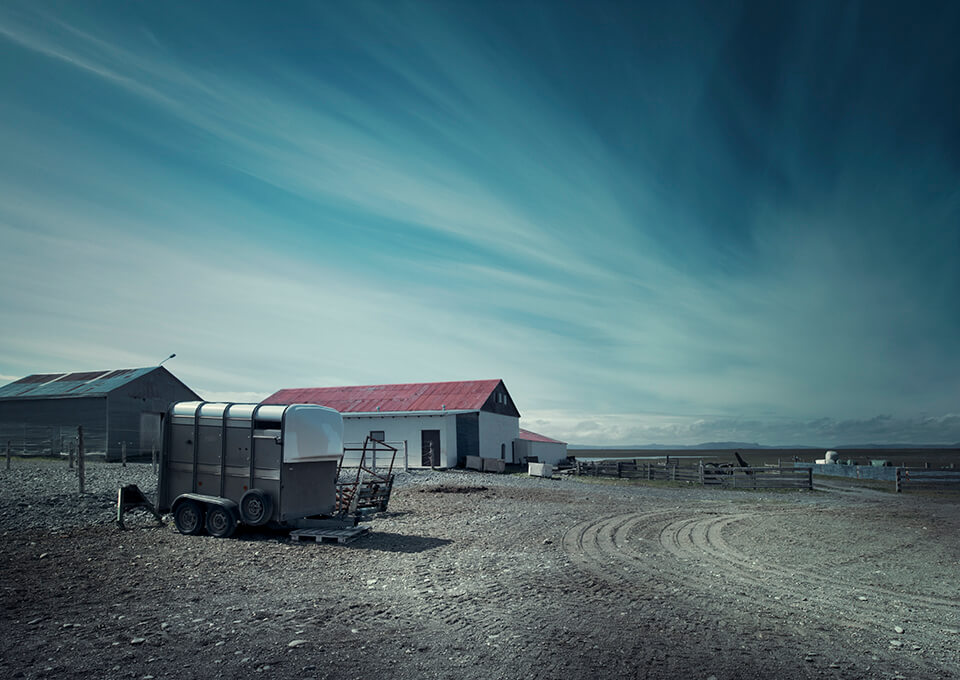
Terns
Not he, but the manse further along served coffee with waffles. Five minutes after getting up, the farmer already had a headache. We had nodded that we understood, although we didn’t really get where he was seeing the crowds of tourists.
Eventually we were allowed to continue, while the terns took out their bad mood on us. We carefully closed the gates leading to the sea. There was no beach; the coastline stopped and the sea just took over. There were coloured balls from fishing nets lying everywhere. As if the sea had played jeu de boules.
Greenland Sea
“Och, Icelanders”, Mirjam had said later with a laugh. “Are they rude?”, I had asked, fishing for the national character. I had read somewhere that Icelanders do not do introductions and that language is purely functional. After all, you’re not going to exchange pleasantries if your fishing boot is in danger of drifting away.
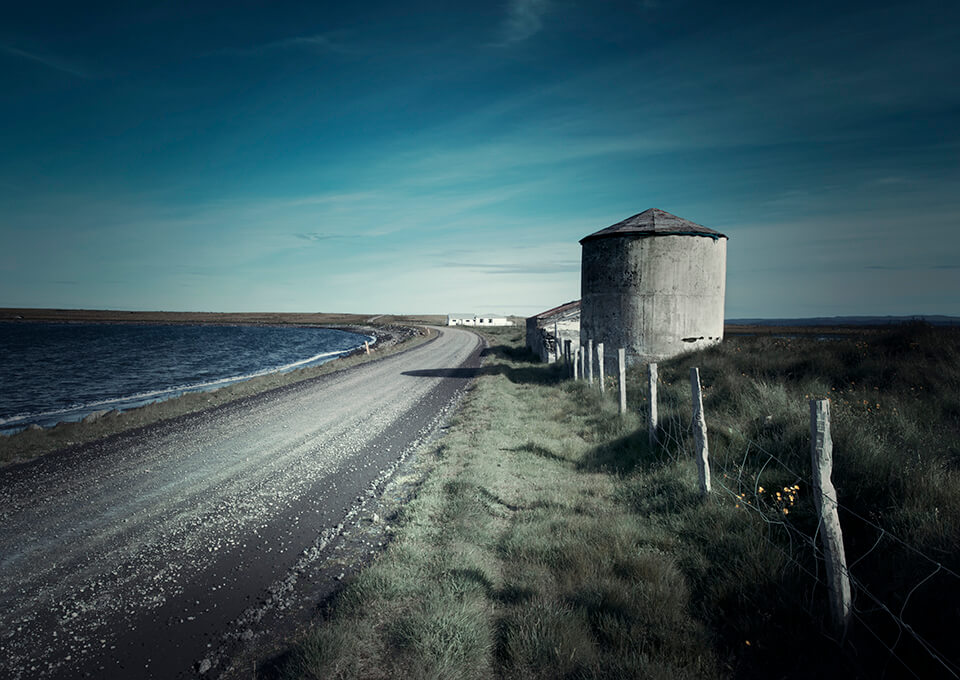
Mirjam had thought about it. “You don’t introduce people to each other, you just fall into the middle of the group. That could come across as rude.”
The rain has eased a little. The wind blows softly into my ear in dear little sighs. In the distance I see the neighbour’s house. Perfectly restored on the outside because that was a condition of the inheritance, but father’s sons did not have enough money for the inside, so nobody lives in the perfect house.
Skálar
The road ends at the sea. The Greenland Sea. On the left, the road leads to Þórshöfn. To the school, the supermarket and the American restaurant where everyone eats their pizzas and drinks their beer. On the right, the road leads to solitude, further along the peninsula past deserted houses and the ghost town of Skálar.
This peninsula was once studded with farms that lived from sheep and fish. And ice. Ice that was stored in the long winter for the fishermen from the Faroe Islands who used it to preserve their fish. With the advent of motor boats, the call for a harbour became louder. The harbour never materialised and Skálar stayed behind as an orphan.
Langanes
That morning, Mirjam had driven us along the peninsula. Past beaches full of silvery driftwood from Siberia and fluttering wisps of grey sheep’s wool. Past grey houses with shutters like closed eyelids. Nature was unanimous in its sober choice of colour; it was only the people who left behind brightly coloured plastic.
In 1965 the last people moved away from Langanes. “Sometimes they got out of bed in the morning and disappeared, leaving their duvet and coffee behind, still warm”, says Mirjam. Eider ducks, lambs or breeding birds moved into the empty houses.
Bakkafjörður
I had walked into a house. On the counter there was still a coffee jug. A bird flew up, startled by my unexpected visit. There were eider ducks bobbing in the pools outside. In spring, Mirjam and her children go round the nests and replace the down feathers around the eggs with straw. The little feathers go into the duvets I sleep under. It’s warmer than straw, after all.
Is the exodus on the peninsula an advance warning of what the rest of the north-east can expect? “Things are always closing here”, 14-year-old Himri had said in Bakkafjörður. We had arrived there looking for a supermarket. There was still a notice on the supermarket: Opening times from 16.00 – 18.00 on weekdays, apart from Wednesdays. But even that was ultimately overambitious.
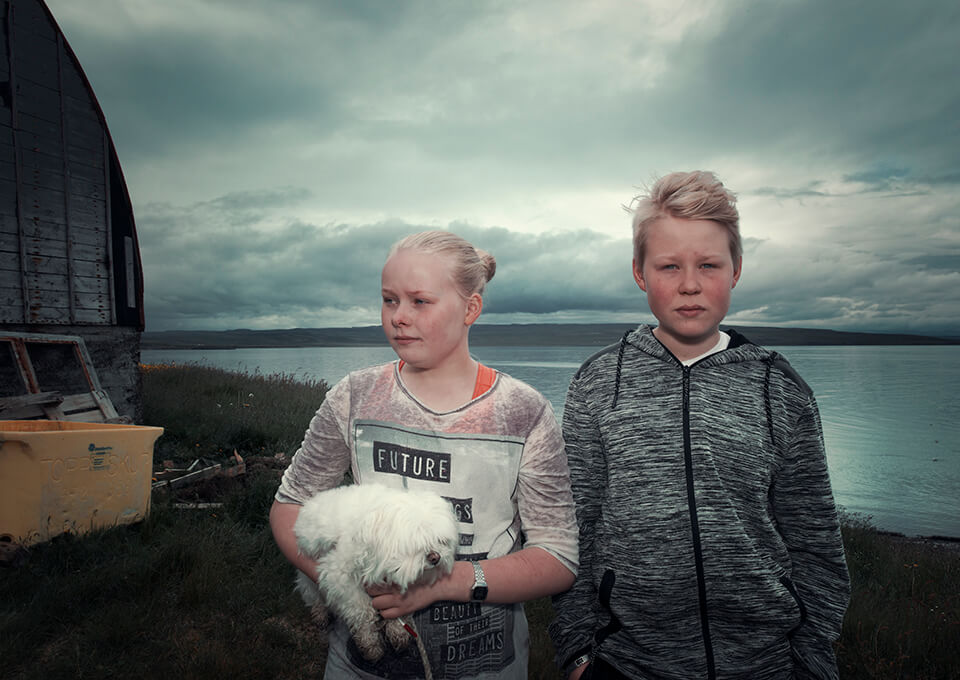
Closing of schools
“They have been closed since this winter”, his little sister Þórey had added. She had walked along the road with her two brothers to let the dogs out. For the fifth time that day. “It’s cheaper and easier to get from Reykjavik to Barcelona than to this region”, the eldest brother Njáll had said. What Njáll hadn’t mentioned was that his family was leaving after the summer as well. Their mother, the minister of the oldest church in East Iceland, had accepted a position in Snæfellsnes, the largest peninsula in the west.
Depopulation is a chicken-and-egg situation. Few people means fewer facilities and so people leave and there are even fewer facilities left. It’s a game that’s difficult to win. Mirjam had sighed; she hadn’t yet got over the shock of the school’s closure. The school with the seven children, including one of hers and two of the minister’s.
Freedom of Iceland
The school that made allowances for the seasons of the farmers. Early holidays so that the farm children could be put to work on the farm, and in autumn a few weeks off so that they could warm up under faraway sunshine. “Florida, Gran Canaria, anywhere as long as it was warm and it broke up the winter.
“This freedom and running a business together with your family is also Iceland”, Mirjam had said, while her son was driving around on a tractor outside and her daughter stripped the beds in the guest accommodation. But now that the school had closed its doors and her daughter had to start all over again somewhere else, she sometimes had her doubts.
Things that disappear
I walk back to Ytra Lón. The rain has threaded itself into a thick mist, a dirty mist that disperses again as if it were ashamed of its childish behaviour. I think about all the things that disappear. The sheep that are herded together after the summer: white, black and brown. Sent to slaughter in Kópasker.
And the terns. “Do you know what’s weird?”, says Mirjam. When the people left Skóruvík at the end of this peninsula, the terns disappeared as well after a while.”
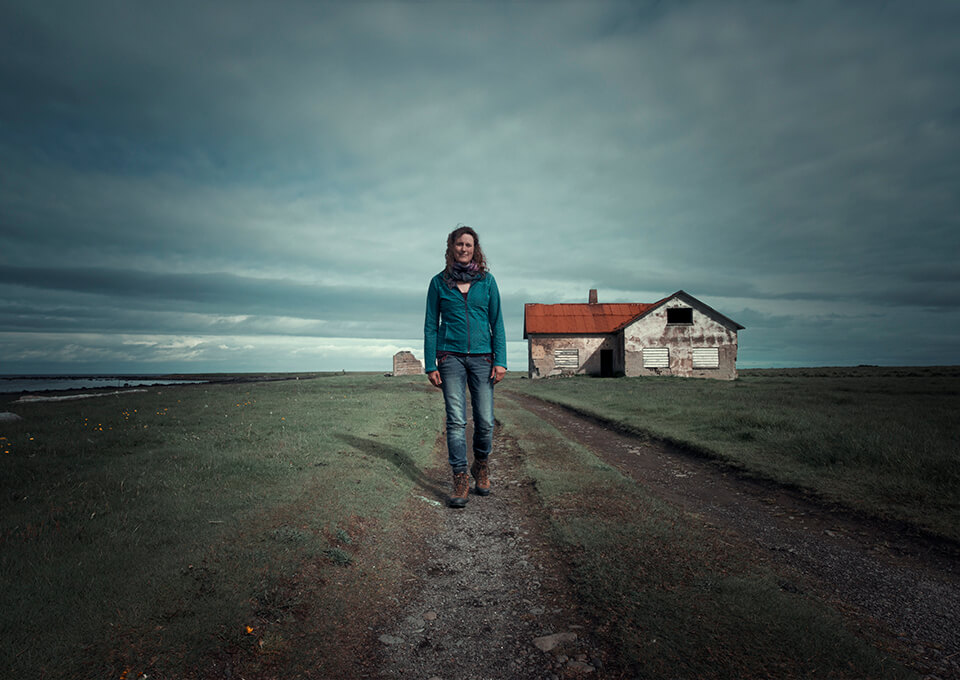
I think about my bed. And my longing for a dark night. The way Mirjam and Sverrir long for tourists that find their way to the north, and are not put off by the light or the dark, pecking terns or the rules that come from Reykjavik.
No man’s land
“Were you away?” the photographer asks sleepily. “It’s pretty heavy outside.” “I made a journey through an uninhabited no man’s land”, I say. And sink slowly into the eiderdown.
Text: Anneke de Bundel – Images: Nicole Franken
Translation: Christine Gardner
- We stayed at Farm Hotel Ytra Lón.
- Icelandair goes daily to Iceland & destinations in the US & Canada.
- Flight Amsterdam to Reykjavik from €340,-
- Air Iceland has national flights to e.g. Egilsstadir.
- We rented a car thru Auto Europe.
Meer Iceland? Do read:
- Iceland, land of raven and arctic foxes
- Iceland 10 hotspots
- The hidden police of Iceland
- Iceland in the picture



